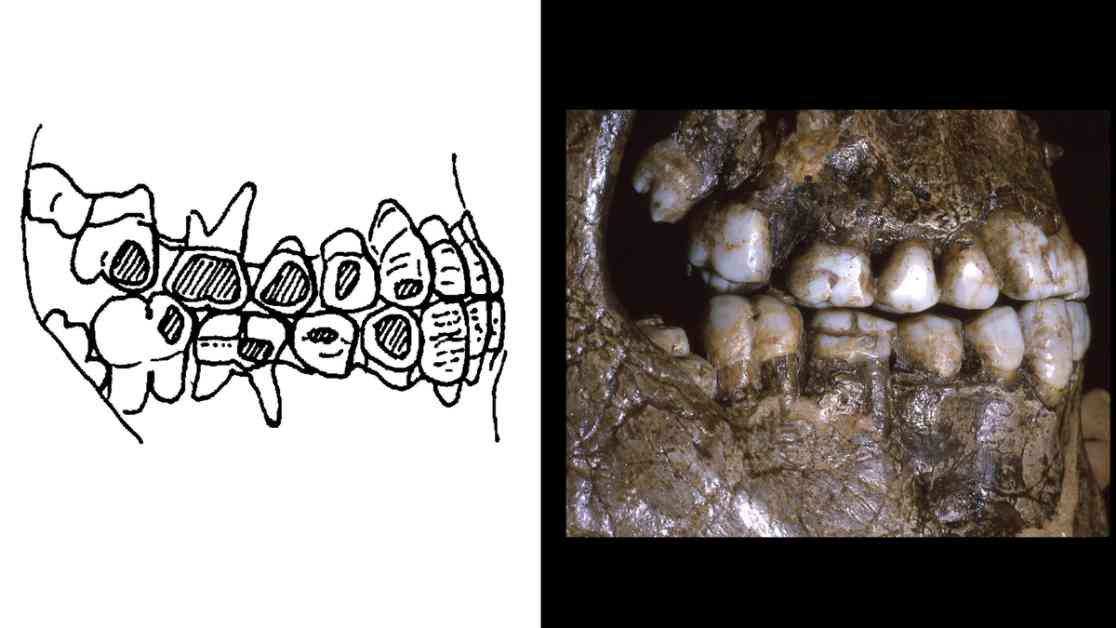Ancient Europeans: Unraveling the Mystery of 10-Year-Olds with Cheek Piercings 30,000 Years Ago
Imagine looking at the teeth from an Ice Age skeleton and noticing peculiar wear patterns on the enamel that defy conventional explanations. This is precisely the mystery that has intrigued archaeologists for centuries when studying ancient Europeans. Recent research by John Willman, a biological anthropologist at the University of Coimbra, sheds light on this enigma, suggesting that these wear patterns may have been caused by cheek piercings worn by individuals as young as 10 years old.
In a groundbreaking study published in the Journal of Paleolithic Archaeology, Willman delved into the dental wear of Pavlovian people who inhabited Central Europe between 25,000 and 29,000 years ago. His meticulous analysis revealed a unique pattern of wear on the cheek side of teeth, unlike the typical wear seen on the chewing surfaces of teeth in modern populations.
The Curious Case of the Pavlovian Cheek Piercings
Willman’s investigation into the dental wear of the Pavlovian people unveiled a fascinating connection between this wear pattern and the use of labrets, a type of piercing inserted into the lower lip or cheek area. Labrets, derived from the Latin word for “lip,” have been a common adornment in various cultures throughout history, but their presence in ancient European societies has been elusive due to the perishable nature of the materials used to create them.
By examining the patterns of wear on the teeth of Pavlovian individuals, Willman hypothesized that labrets may have been the culprits behind the distinctive enamel abrasion seen on their teeth. The wear appeared to be associated with the insertion of labrets, which may have signified group membership and personal identity among the Pavlovians.
Childhood Initiation into Adornment
One of the intriguing findings of Willman’s study was the presence of wear on the baby teeth of some individuals, indicating that the use of labrets likely began in childhood. As individuals matured, the wear on their teeth increased, suggesting a gradual progression in the size or number of labrets worn over time. This evolving pattern of wear could reflect significant life events such as puberty or marriage, which earned individuals the privilege of adorning themselves with labrets.
Despite the cultural significance of labrets among the Pavlovian people, Willman also highlighted the potential risks associated with these adornments. Improperly placed labrets could cause teeth to shift, leading to dental crowding and other complications. This novel insight into the impact of labrets on oral health adds a human dimension to the archaeological study of ancient cultures.
Expert Perspectives on Ancient Adornments
April Nowell, a Paleolithic archaeologist at the University of Victoria, emphasized the significance of Willman’s research in shedding light on the personal and social identities of Ice Age populations. By examining the subtle traces left behind by ancient adornments, researchers can gain valuable insights into the complex rituals and social structures of past societies.
Nowell’s enthusiasm for Willman’s study underscores the importance of reevaluating existing archaeological collections to uncover overlooked evidence of ancient adornments. As archaeologists continue to explore the material culture of Ice Age societies, the mystery of the Pavlovian cheek piercings may offer new avenues for understanding the rich tapestry of human history.
In conclusion, Willman’s innovative research not only illuminates the cultural practices of ancient Europeans but also highlights the enduring human desire for self-expression and belonging. Through the lens of dental wear and cheek piercings, we catch a glimpse of the vibrant social dynamics that shaped the lives of Ice Age individuals. As we unravel the mysteries of the past, we are reminded of the timeless quest for identity and connection that transcends millennia.










